Exposición
Fieldwork and exhibition design
In the centre of the exhibition space stood a greenhouse with an arched steel frame and translucent membrane. Visitors could enter the greenhouse to experience foggy air, a soundscape of blended field recordings, and soil under their feet. They could also walk around the installation and engage with wall-mounted photographs, activist posters, digital displays, research collages, and interview transcripts. Exposición was designed to catalyse reflection on harsh working conditions.
I drew upon fieldwork in Huelva, Andalusia, where the intensive agrochemical industry has produced a vividly humanmade topography, from its expansive ‘sea’ of plastic polytunnels to the largest radioactive waste deposits in Europe. Strawberry pickers, predominantly women from Morocco, are denied permanent residency while bearing the burden of exposure to carcinogenic and endocrine-disrupting herbicides. The Spanish word ‘exposición’ can be translated as both (chemical) exposure and (art) exhibition. The idea was that Exposición would tell multiple stories, interweaving the perspectives of seasonal workers and activists with the visitor's own embodied experience.
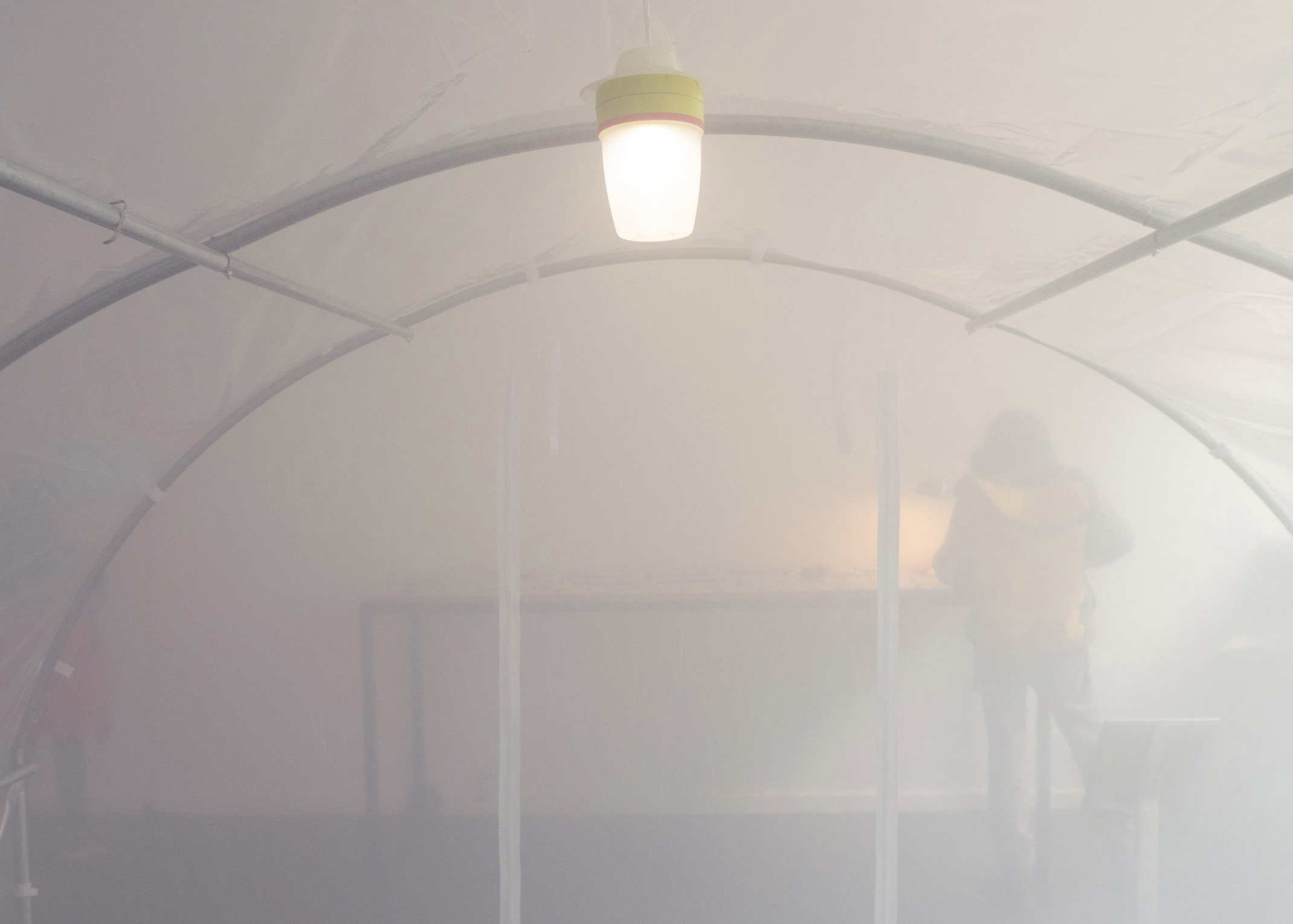
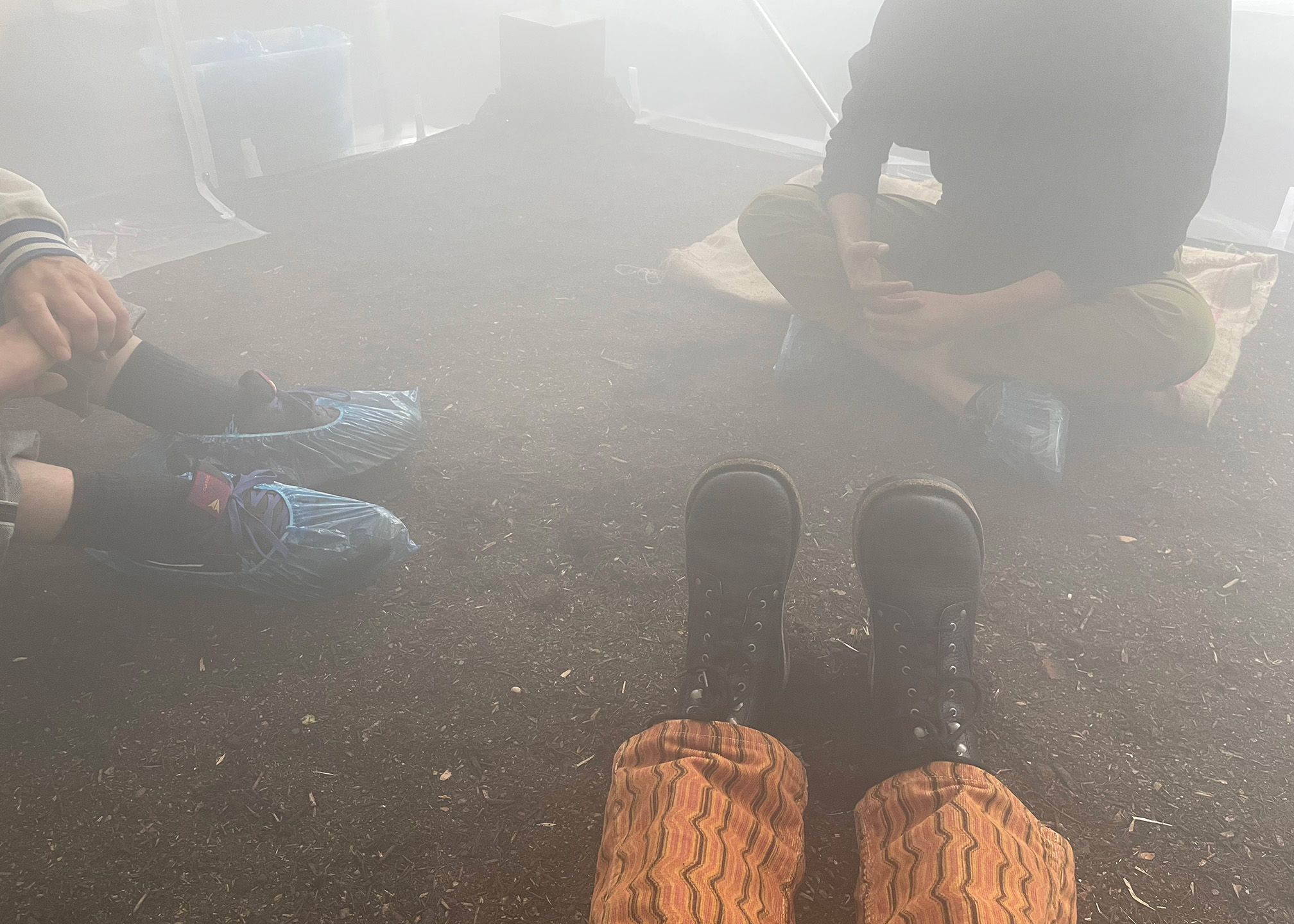
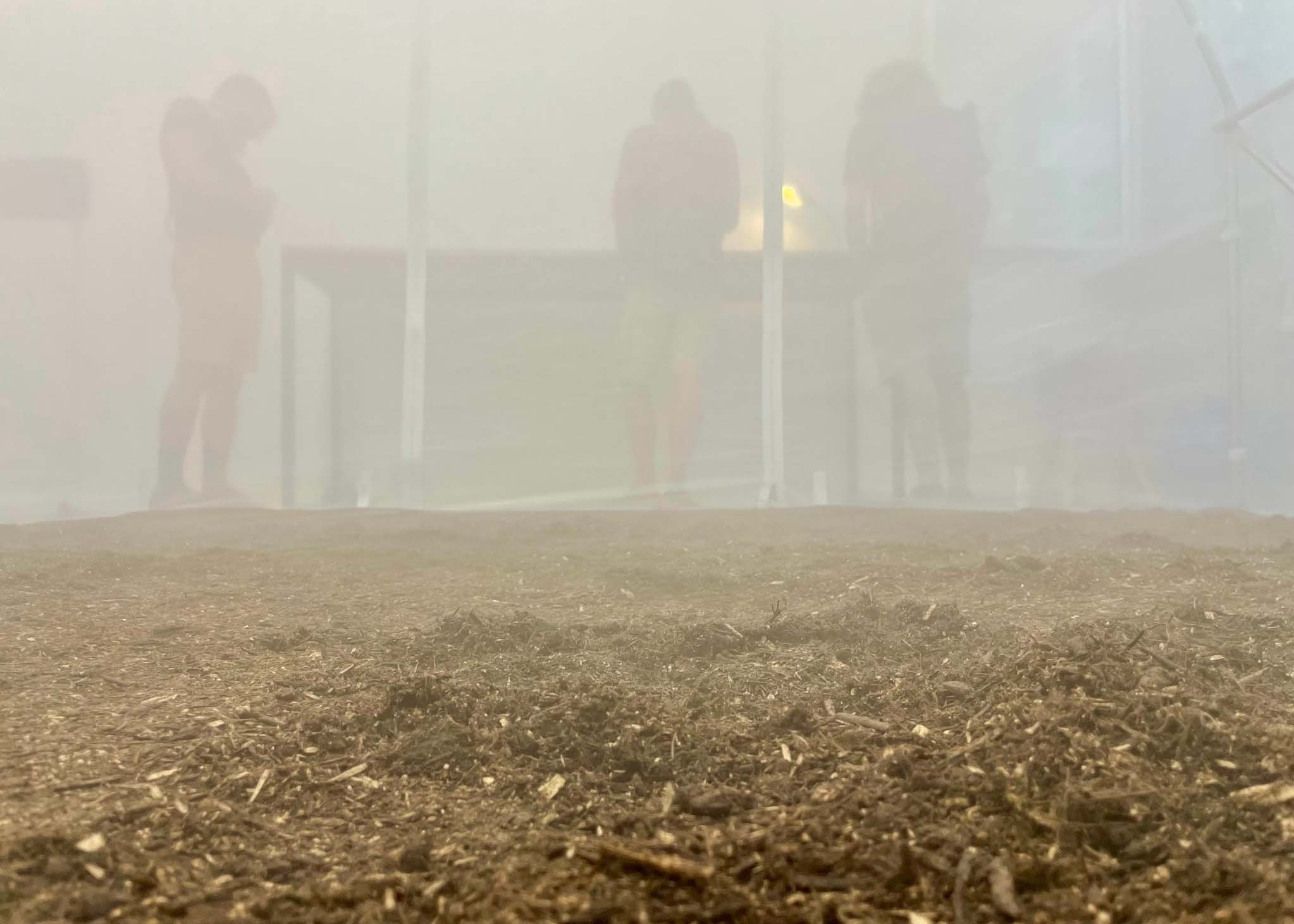

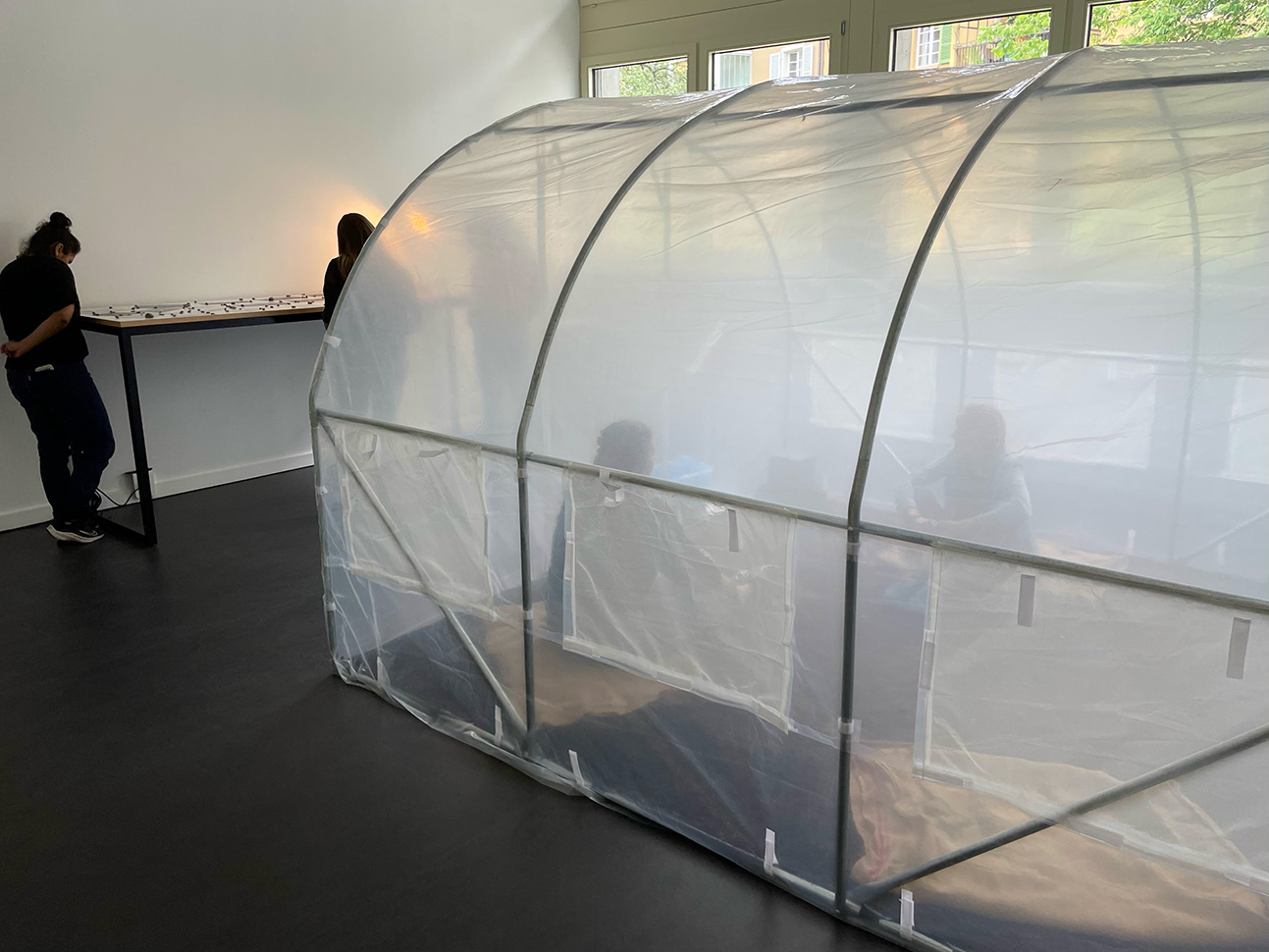
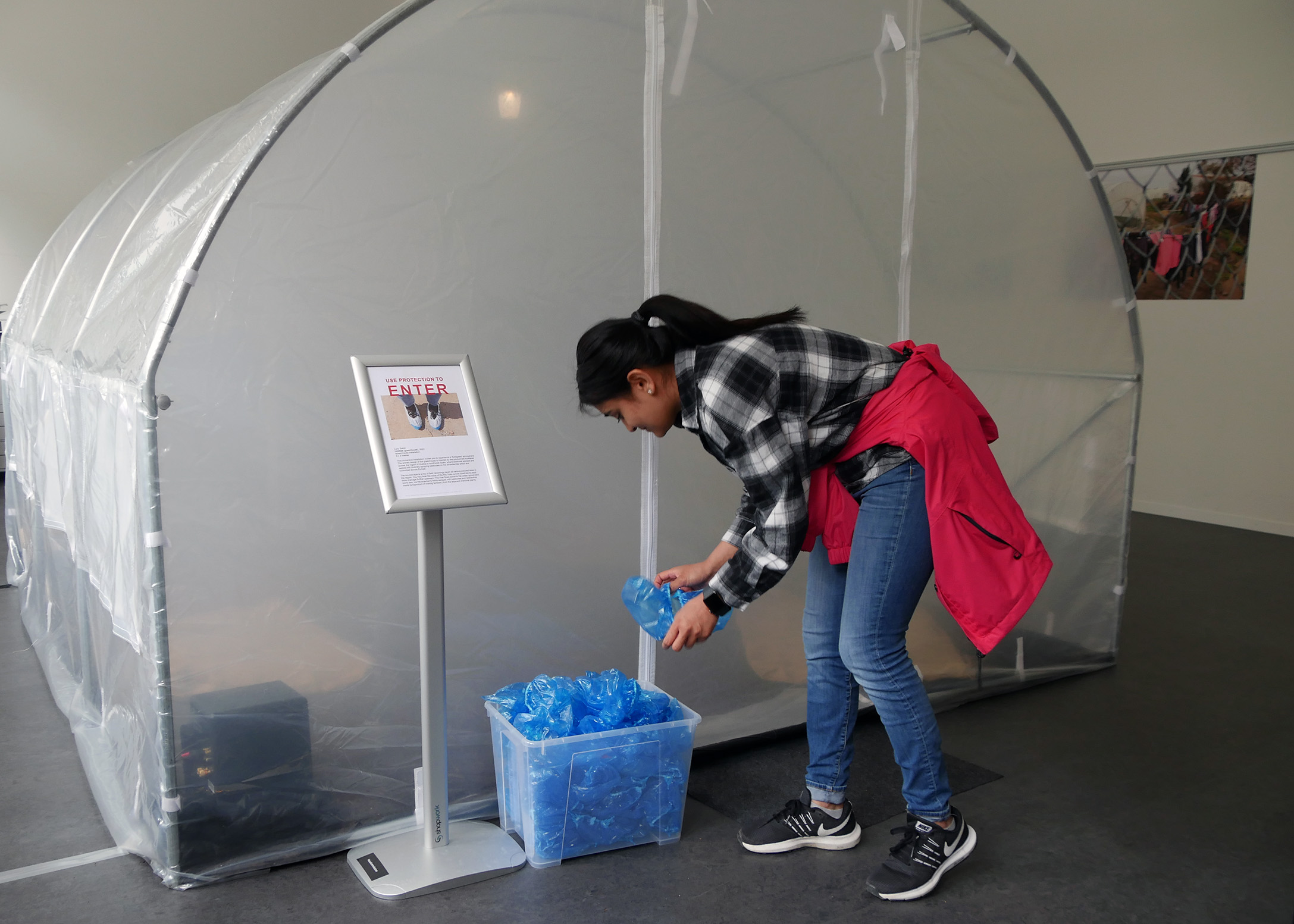
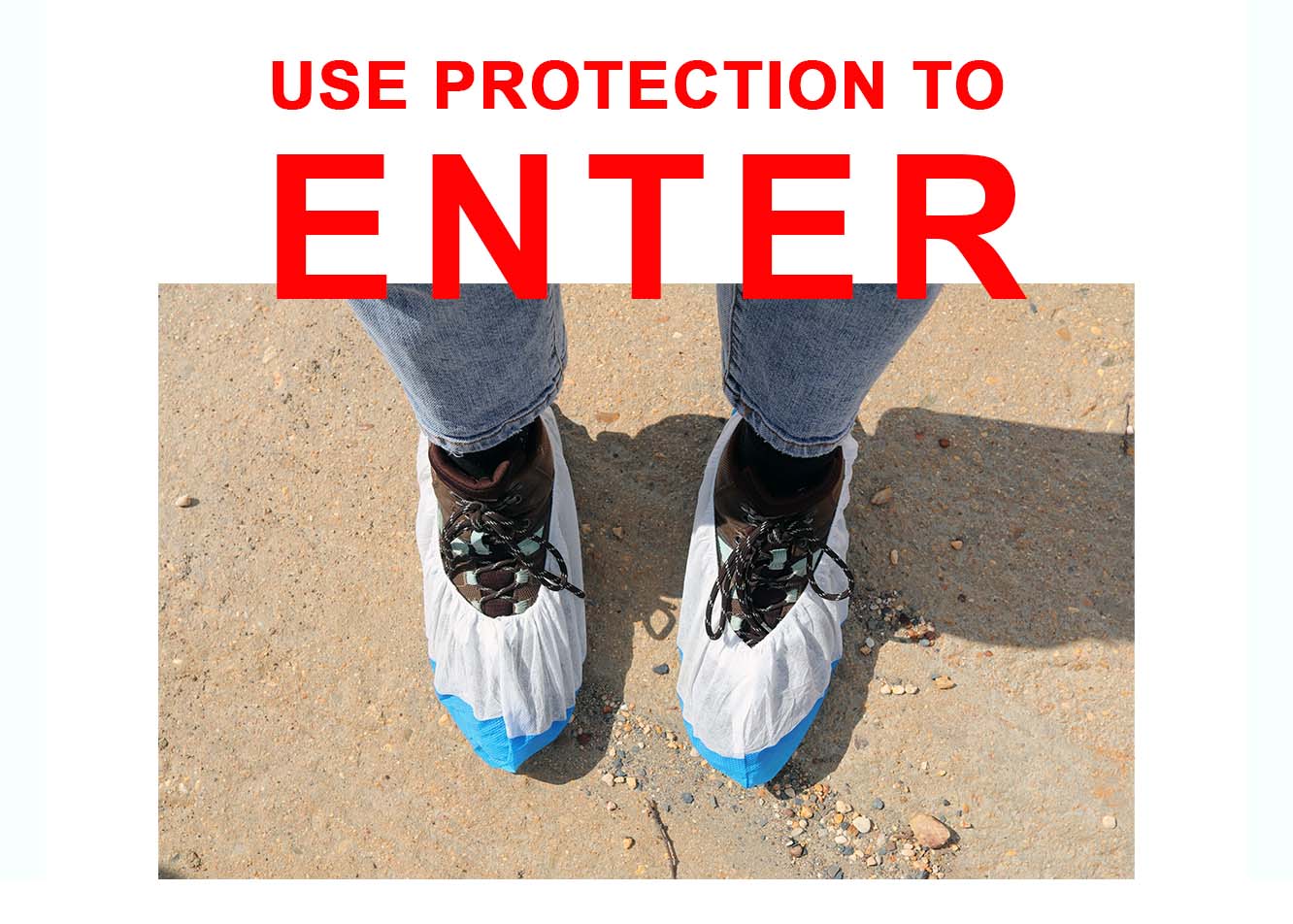
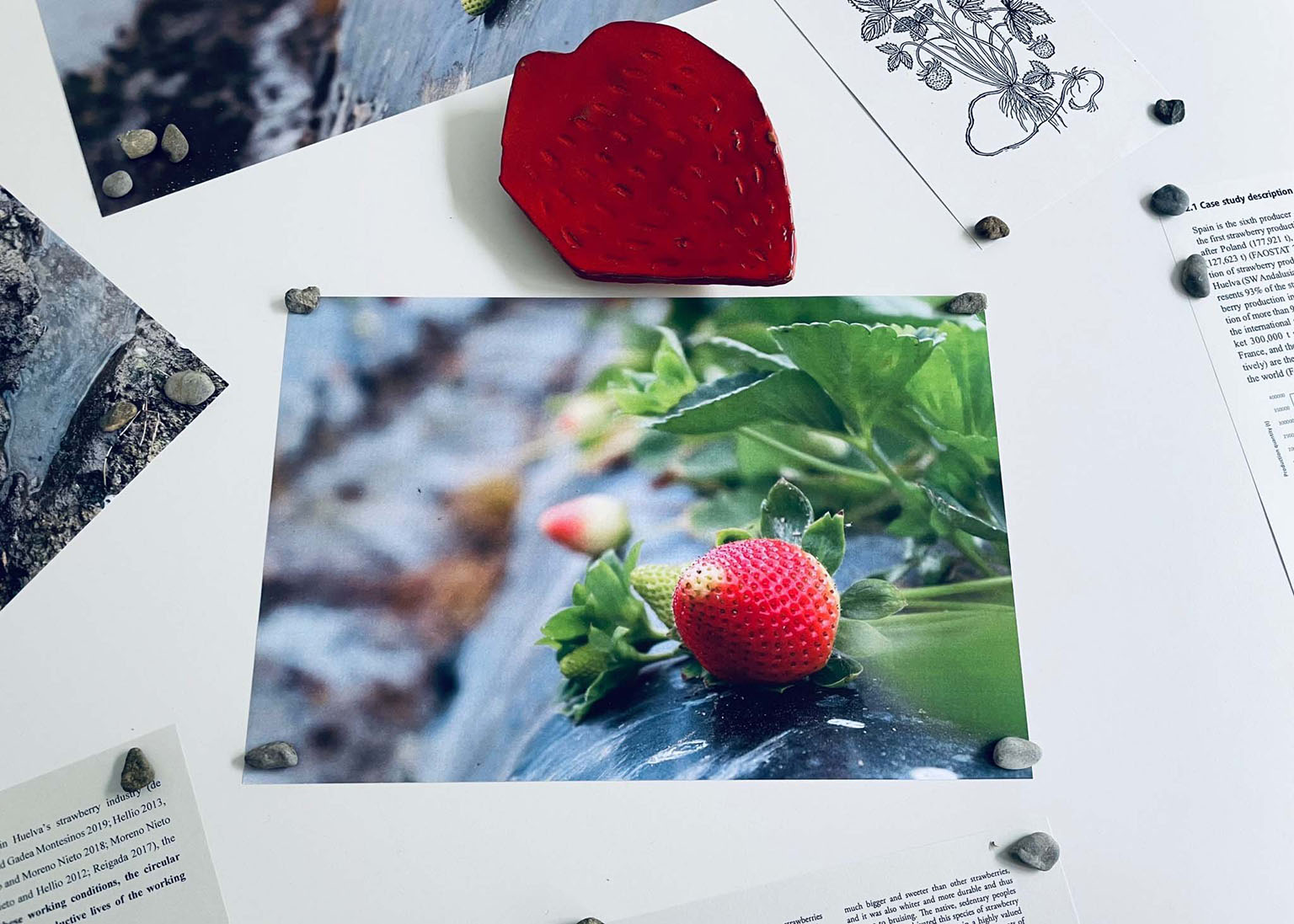
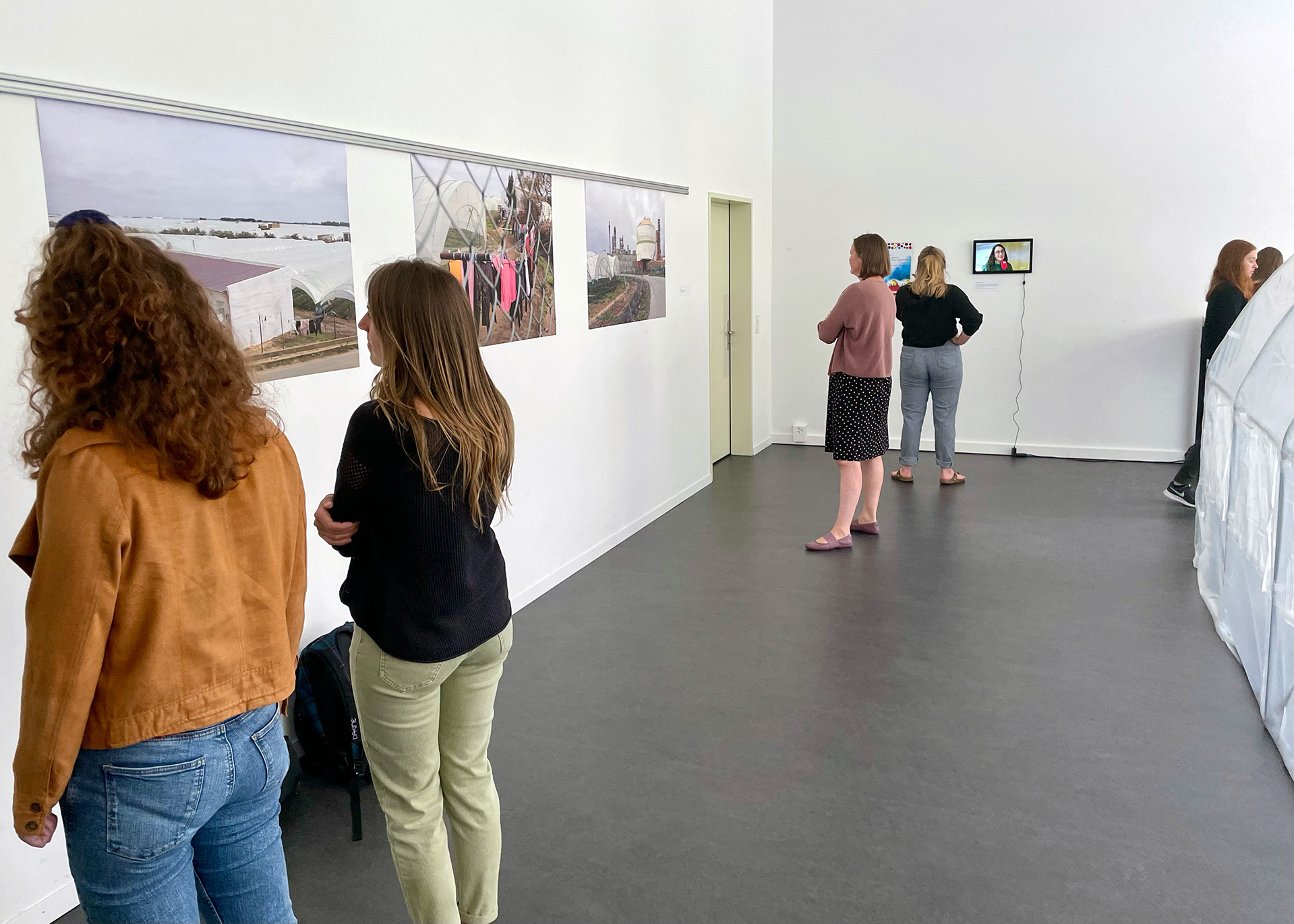
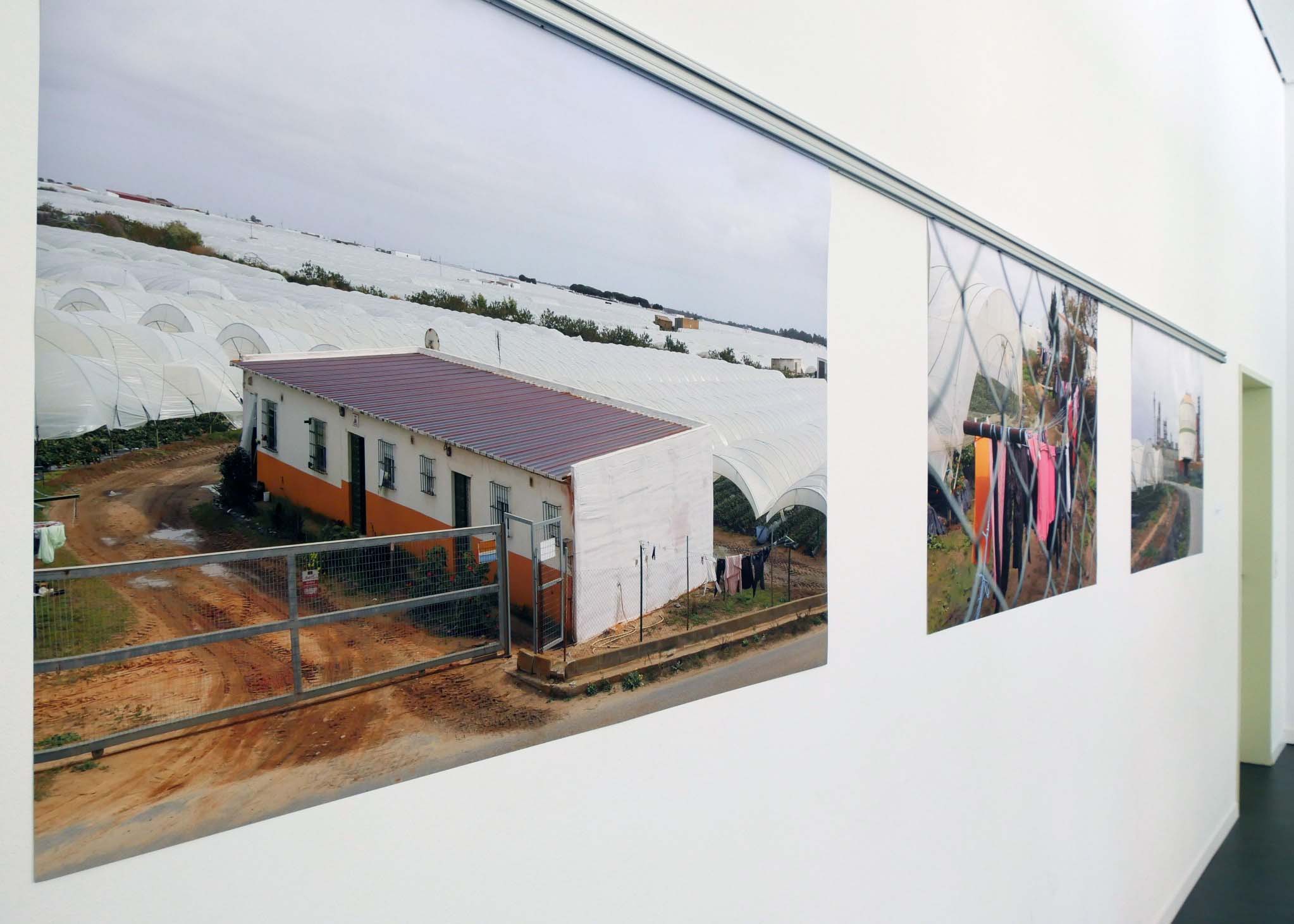
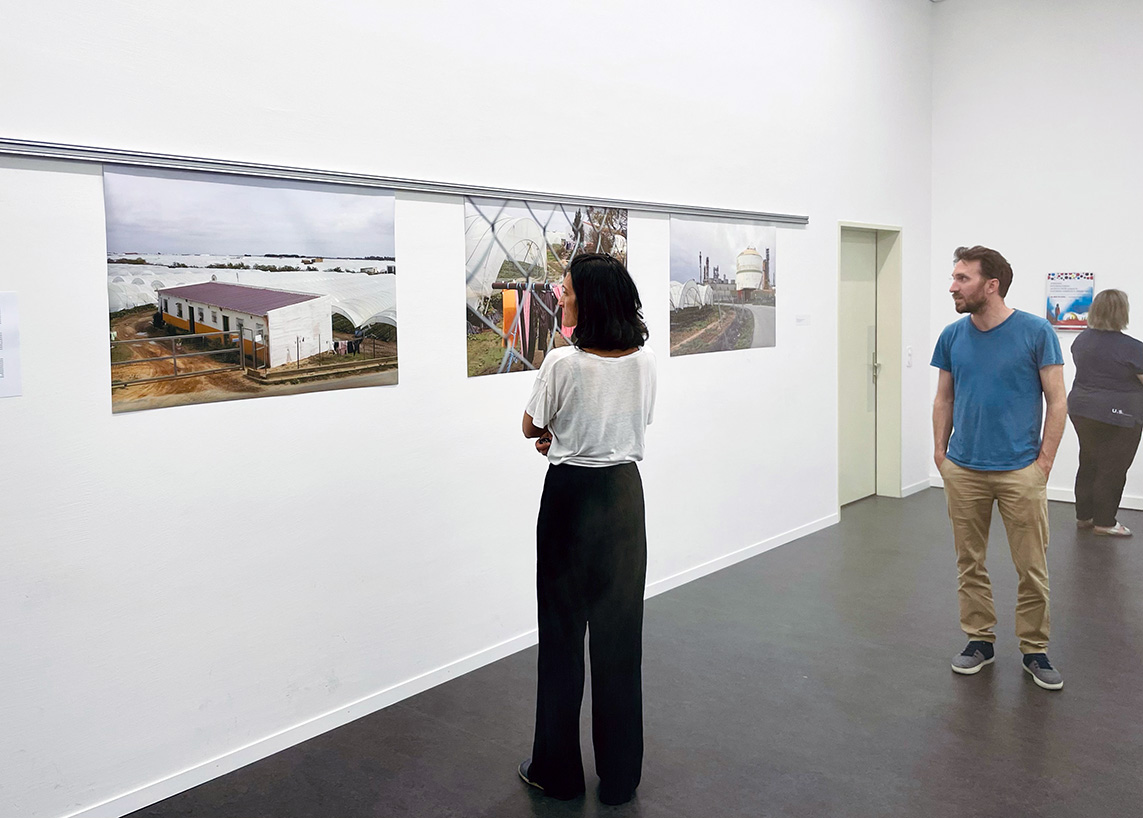
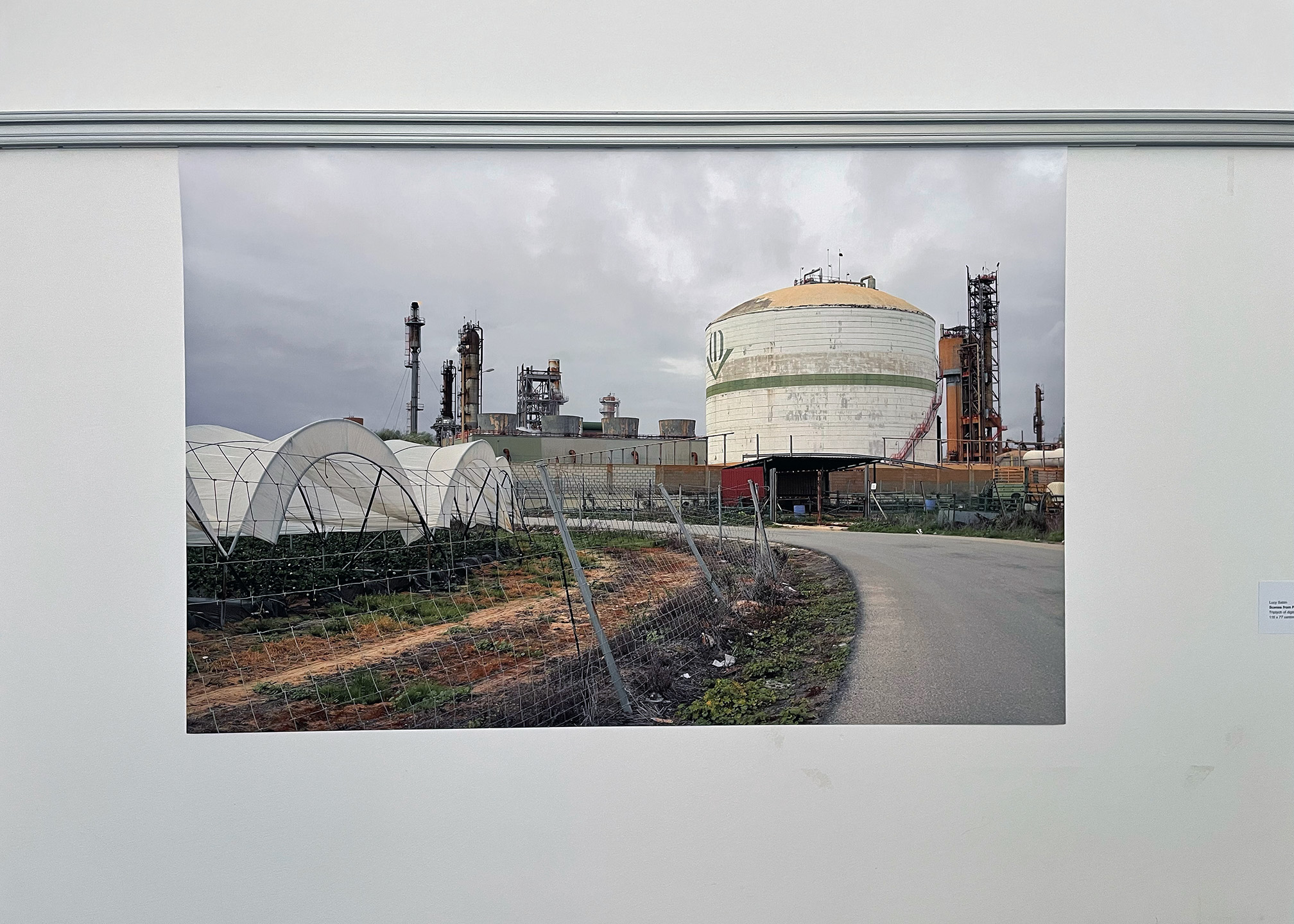
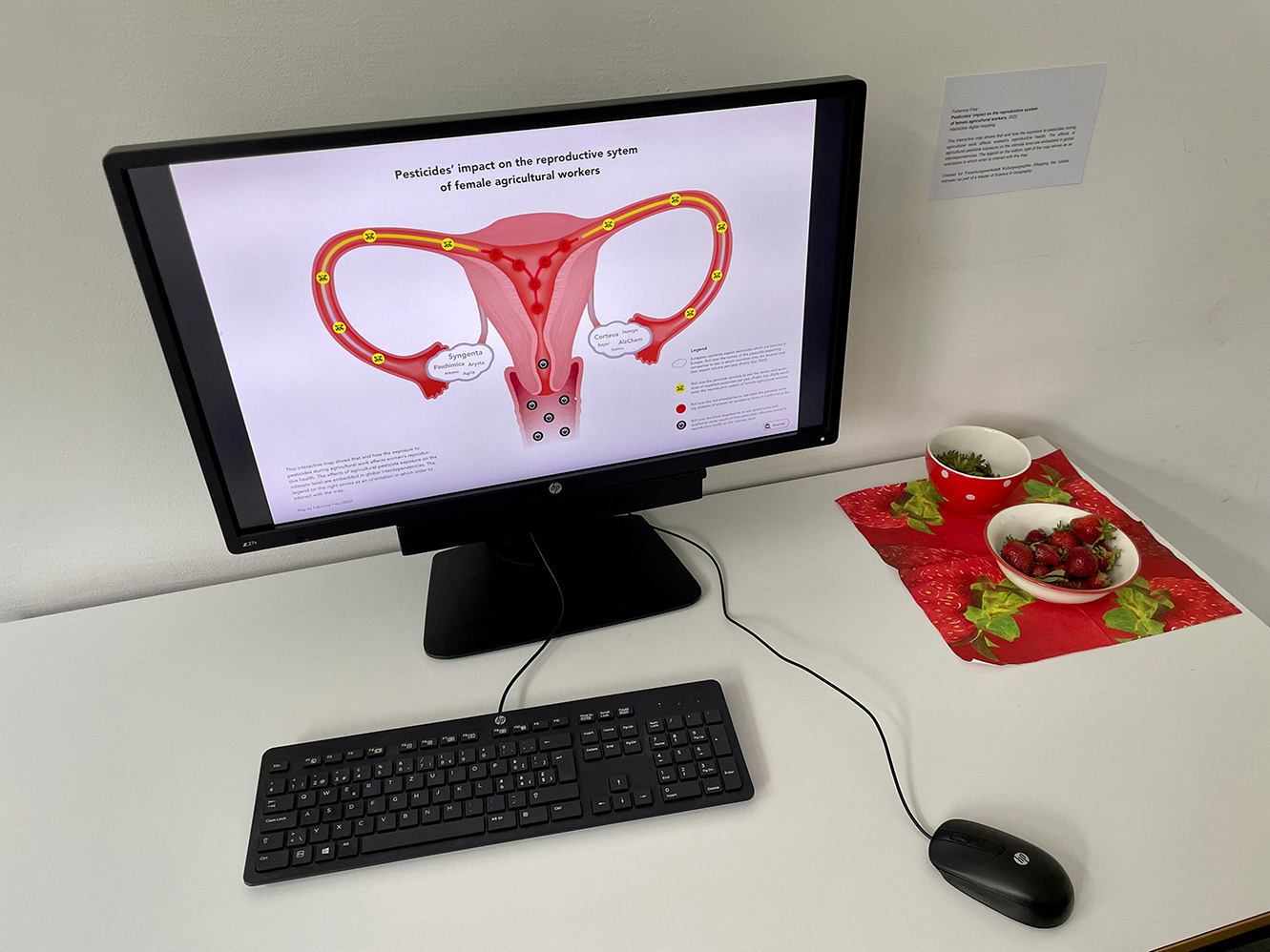

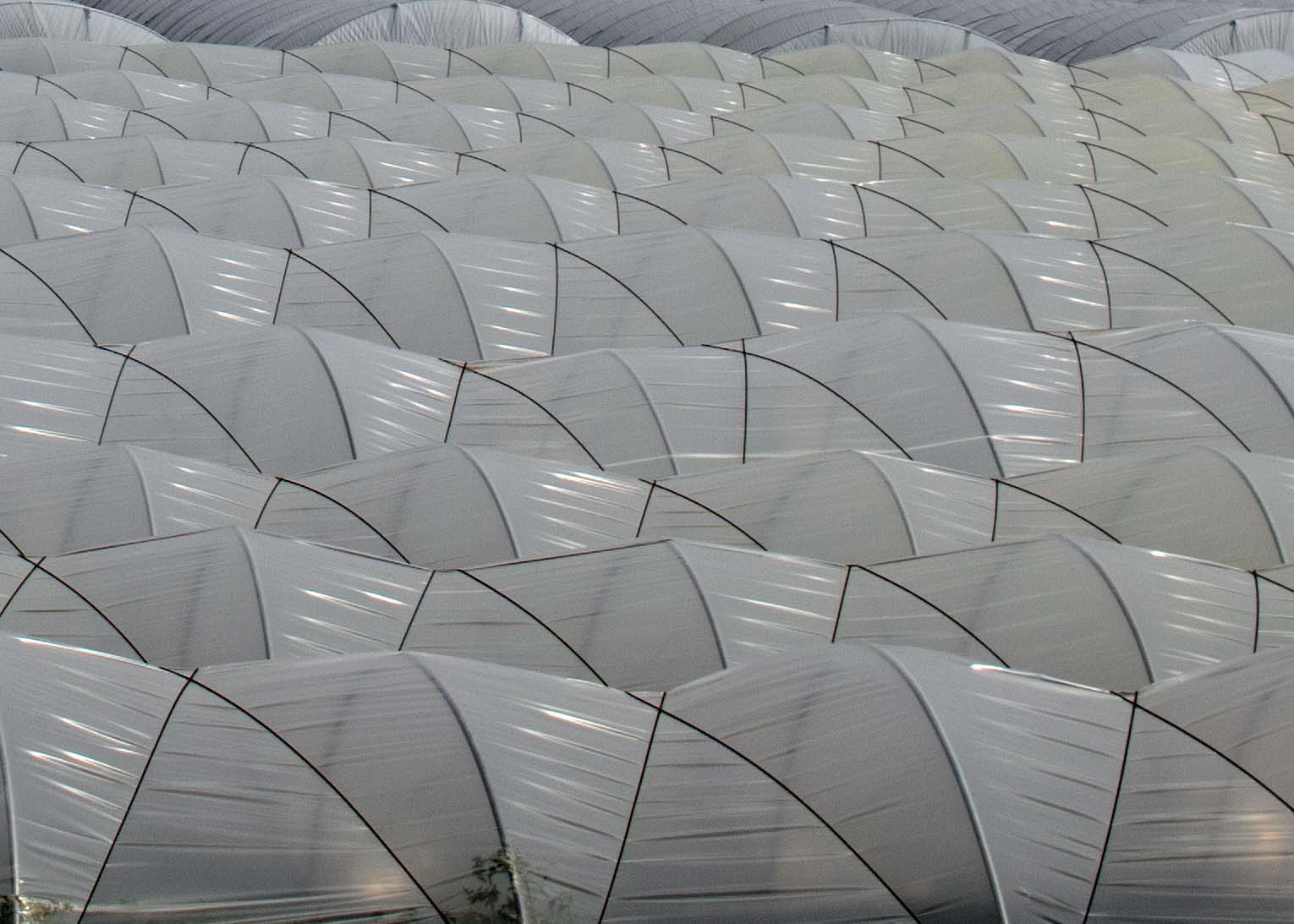
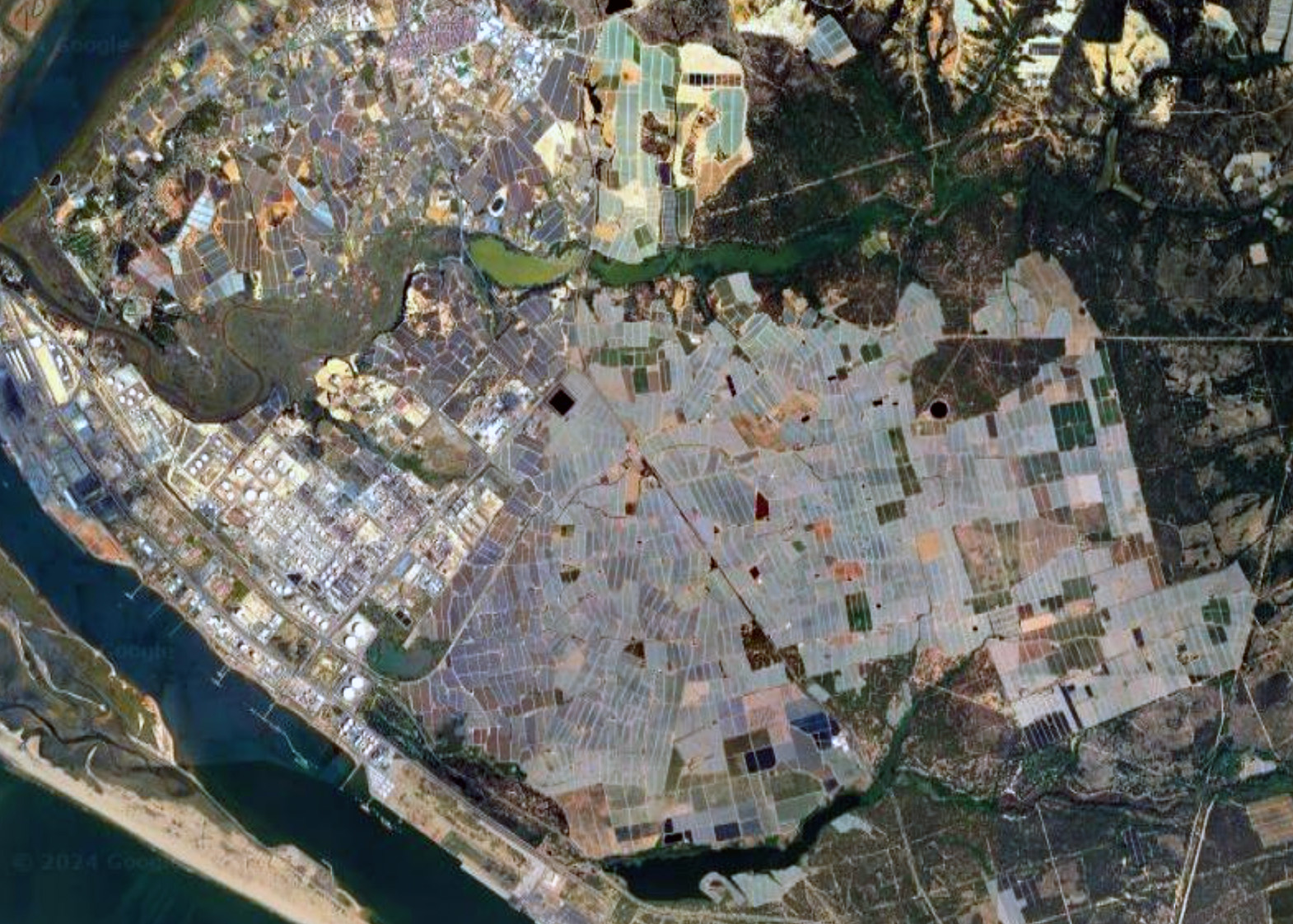
Exposición was supported by mLAB, a creative media space within the Institute of Geography at the University of Bern, as part of their annual residency programme in May 2022. I collaborated with geographer Nora Komposch who investigates the reproductive health of agricultural labourers in Andalusia from a social science perspective; and Adrien Mestrot, Professor of soil science, whose laboratory team researches how pollutants including trace pesticides move through and transform (with/in) environments.
Related research: 'Exhibiting toxicity: sprayed strawberries and geographies of hope' in Cultural geographies (Sabin, Komposch, and Mestrot 2024); 'The human and environmental cost of perfect strawberries' in Pesticide Action Network UK (Sabin 2024); Exposición in Artographies, published with Transcript (Winkel et al., 2024).

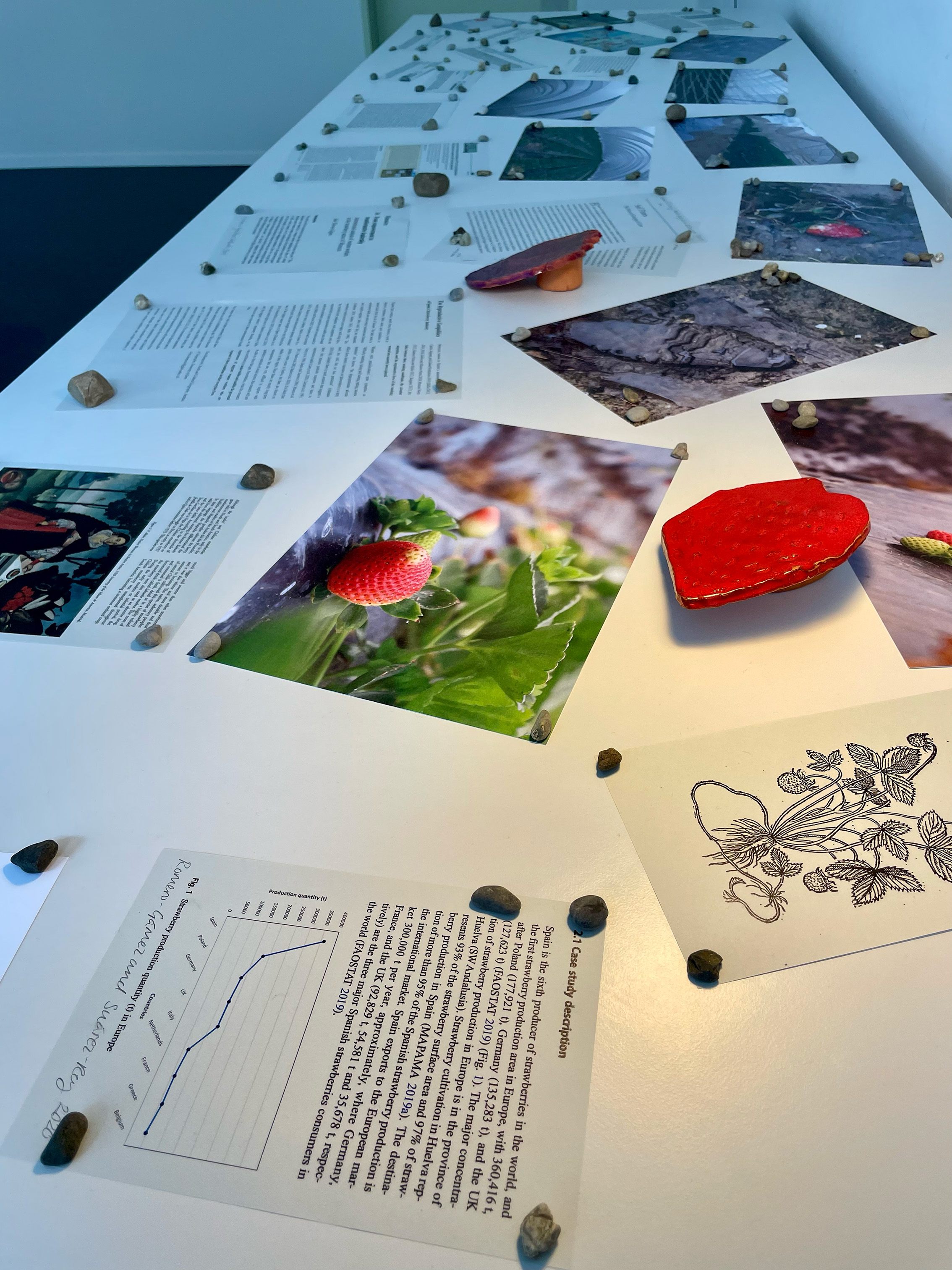
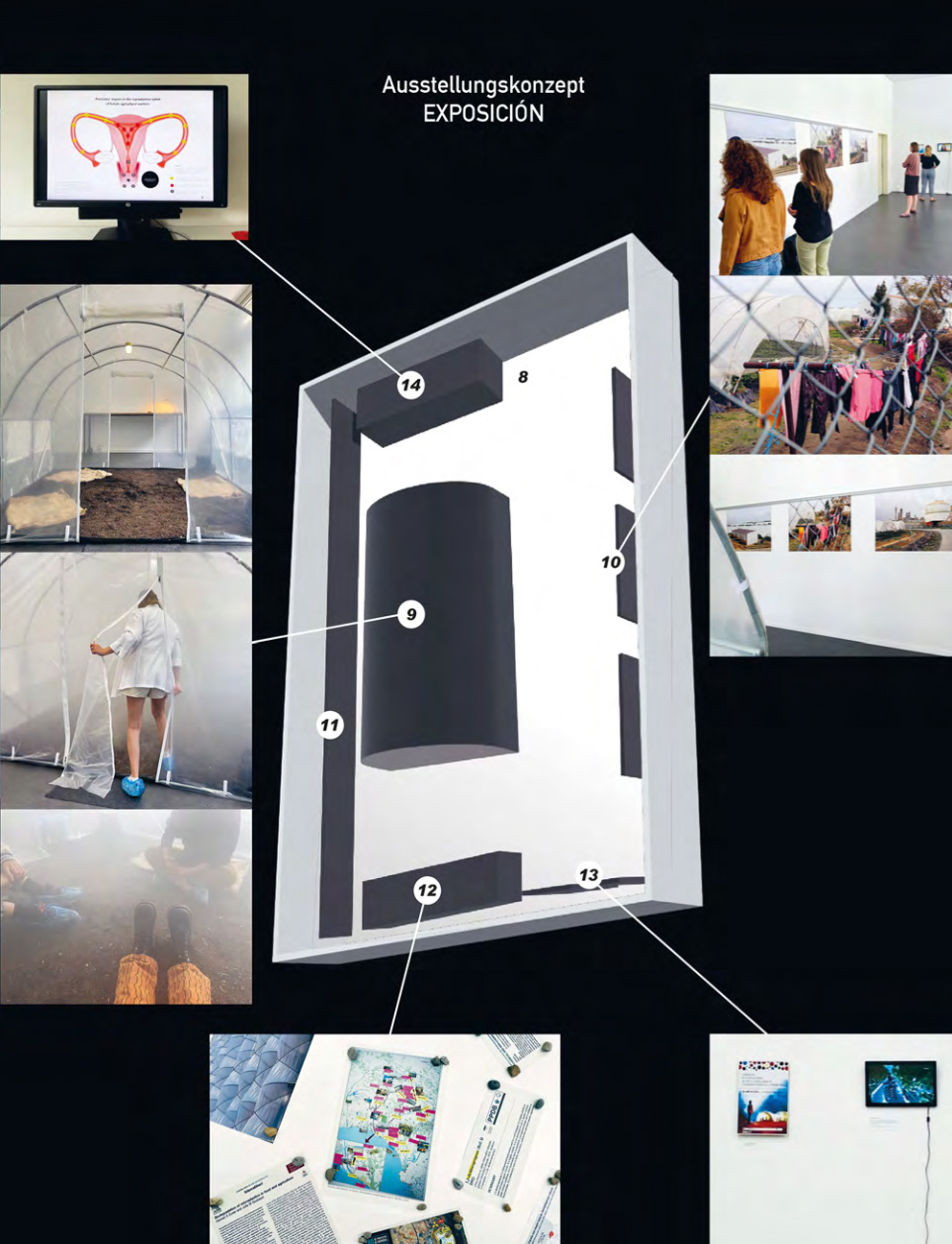
Diagram of Exposición published in Artographies (Winkel et al 2024)